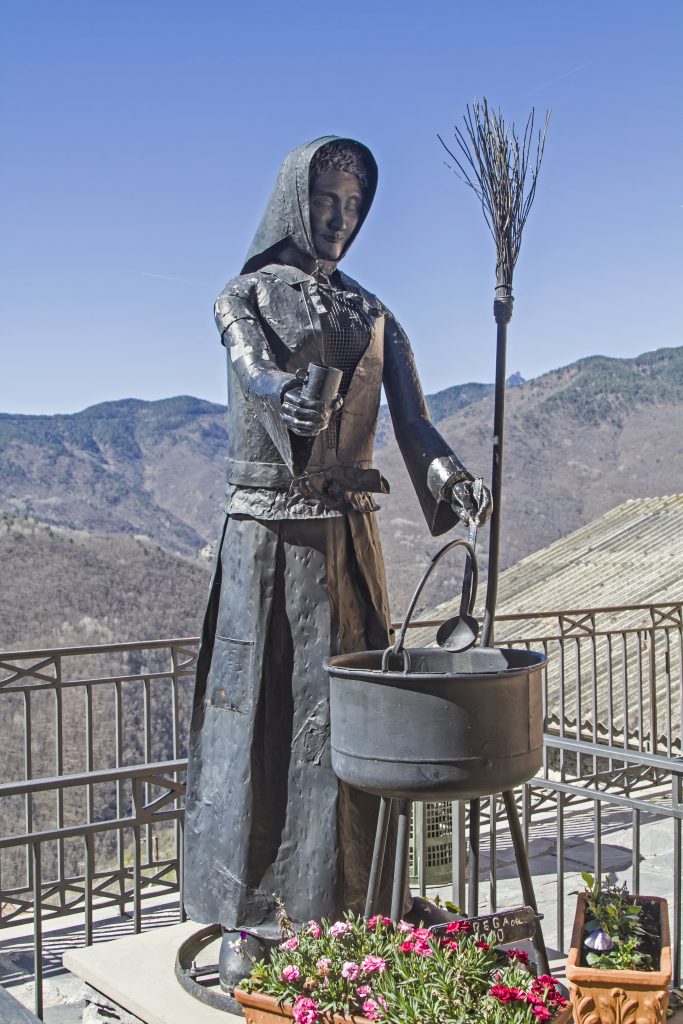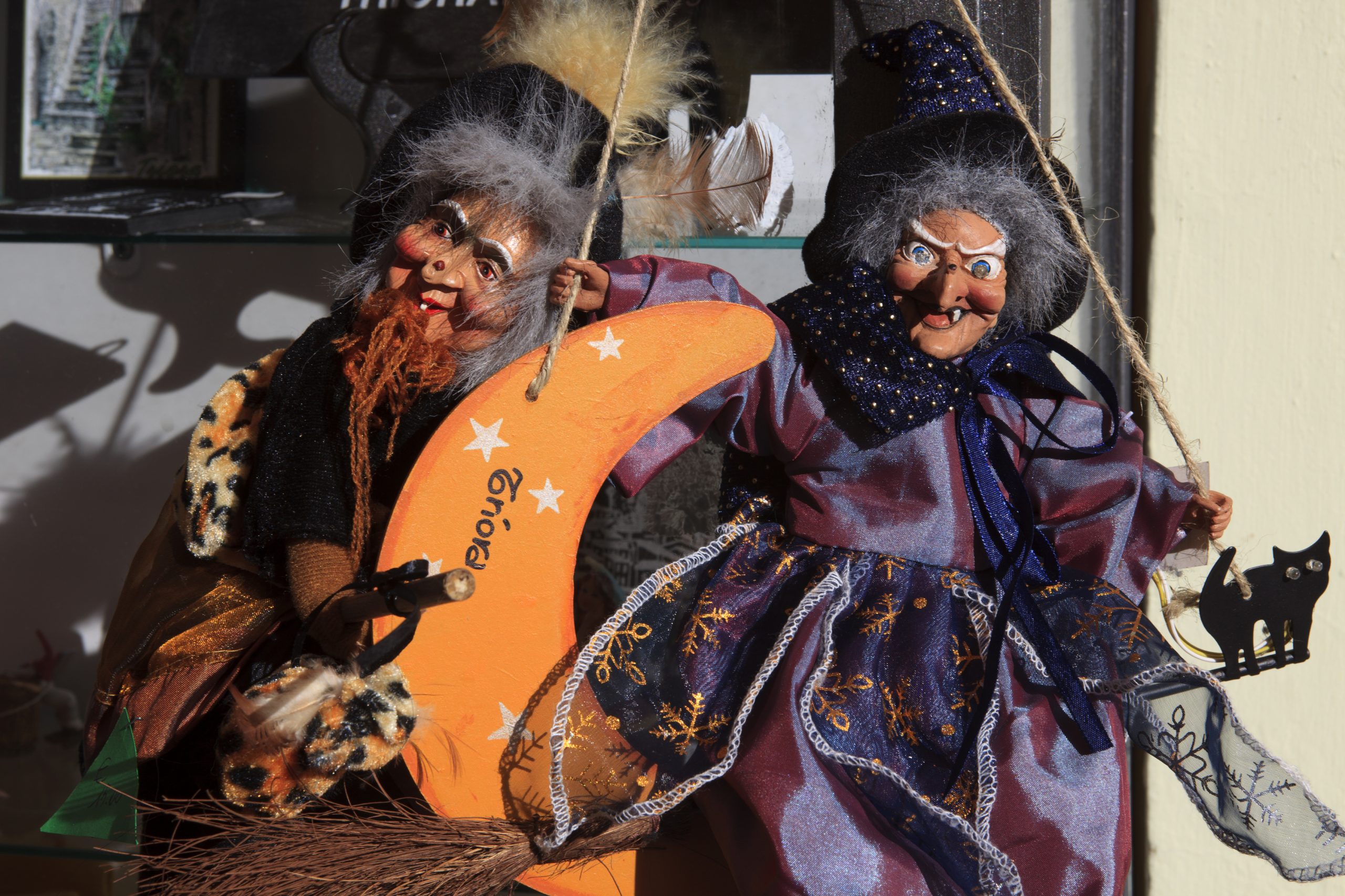What a beautiful day to write. Despite being the first month that truly brings cold to the country – September seems to be every year more summery – October still has some spectacularly bright days, with colors and scents so vivid they easily rival those of our bella stagione. Take today, for instance: it’s chilly but sunny, and the sky is the color of periwinkles. There are no clouds, and the light shines on that wealth of golds, oranges, reds, and purples so typical of the fall in this part of Italy. It’s just beautiful and peaceful.
The right day to write, indeed.
But what truly fascinates me about October is its atmosphere. For those who love the cold season like me, this is the first month we feel comfortable: sweaters are back, Dr. Martens finally come out of storage and so do all our beloved woolly hats and scarves. Roasted pumpkin is on the menu and so are hot chocolate with lashings of whipped cream and giant mugs of coffee with pumpkin spice — ok, this may be a pretty personal choice: most Italians from Italy would scream at the idea of it.
And then, it gets dark early. This is, perhaps, the only time of the year when Italy gets something close to the British Islands’ beloved twilight, that moment between day and night where everything, from nature to light, from sounds to our thoughts, is suspended in time and space. Thinking of it, October is the twilight month of the calendar year, and so it shouldn’t surprise it is also the month of the paranormal, of the spiritual and the mysterious. For Catholics, October is the month that leads to the celebration of All Saints and All Souls, on the 1st and the 2nd of November respectively. History teaches us the two festivities weren’t set in those two days randomly, but in accord to ancient pagan festivals people around Europe, especially in the countryside, still celebrated despite having long converted to Catholicism. Of course, the pagan root I’m talking about is the one called Samhain by the old Celts, and commonly known today as Halloween.
Here, we come full-circle.
Halloween, the day of spooks and trick-or-treat, but also the first of three days, if we include All Saints and All Souls, dedicated to the Great Beyond. The whole month of October, with its liminality, soft light, and darkened colors, is the perfect preamble to all that. And the perfect month to talk about the paranormal. About witches. Salem’s are the most famous in the world, and what fascinates so many about their ordeal is the way the unseen and history came together and delivered what turned into a truly popular culture phenomenon. Many, I’m sure, got interested in the Salem Witch Trials for the paranormal side of it, but ended up exploring its historical, psychological, and moral facets.
And while Italy’s witch trials may have never reached, at least when it comes to popular knowledge, the magnitude of Salem’s, we had some unfortunate, gruesome cases, too, such as those of Triora – known, in fact, as “the Italian Salem” – and Rifreddo, and others where legend and mystery, rather than history, actually take the lead, like in the case of Benevento. Not many are familiar with these witches, but their presence is still there, in the alleys of their villages and the words of legends and history books.
So grab that pumpkin spice coffee and get comfortable, because it’s time to take a journey in the world of Italy’s witching villages.
Triora is the first stop of our journey because it remains the most (in)famous of all witches’ villages in the country. Triora is a small commune in the Argentina Valley (Imperia) on the Maritime Alps. With a population of 355, it is a small hamlet, known mostly for its traditional, hearty bread made with buckwheat flour and its witch trials, which took place in the mid-16th century. Just like Salem, Triora made of the historical tragedy that hit its people a marker of its identity and, indeed, a source of popularity: its homes, streets, and alleys have been kept largely the way they were in the Middle Ages, with extra “witchy” decorations, like broomsticks, black cats’ metal cutouts, murals and frightening stone sculptures, just like in Salem. And just like its New England counterpart, Triora’s tourist industry is largely based on the events that took place all those centuries ago: between 1587 and 1589, 30 women (and one young man) were accused of witchcraft and jailed. The accusations against them were also similar to those brought against the women of Salem: they were accused of having caused with magic the tragic famine that had been plaguing the village, and also to have kidnapped – and sacrificed – some children. Historical sources tell us clearly that crops’ failure had nothing to do with magic, and was likely the result of landlords’ incompetence, yet, it was much simpler to find a physical, tangible scapegoat in these women, who were notably isolated from the rest of the community because of their age, their personality or their activities – some of them were healers. The witches were initially imprisoned in Ca’ de Baggiure (known today as “the witches’ home”) and, at least some of them, were later moved to Genoa. According to the prosecution, Triora’s witches would meet with the Devil in a place called Cabotina, which you can still visit today. While their execution was eventually stopped by authorities, many of these women died under torture: the most famous among them is Isotta Stella, whose story, along with that of all the other victims, is today told in Triora’s Museo Etnografico della Stregoneria, dedicated to the trials.

A handful of miles north of Triora, in the Cuneo province of Piedmont, is the village of Rifreddo, our second stop in this fascinating trip into mystery and history. Rifreddo, whose name comes from Latin and means “cold river,” lies at the feet of Mount Bracco. Today, this small, quiet town of 1000, cradled fatherly in the imposing, yet protective embrace of Mount Monviso, is still known by historians and paranormal investigators because of the events of 1495, when a bloody witch trial – whose victims, it seems, still roam Rifreddo’s streets at night – took place. After the mysterious death of an attendant, the abbess at the local female Cistercian convent felt the Inquisition was needed: the man, she thought, died because of the Devil. Vito Beggiani, an inquisitor, reached Piedmont from Milan in 1495 and the witch hunt began. Soon the masca (Piedmontese for witch) was identified: it was Caterina Bonivarda. Just like in Salem and Triora, many other women linked to her were also accused, following that “domino effect” typical of the Inquisition period. Of course, the women were charged with witchcraft and, according to the trial records, which are still extant, they had even confessed to it, but only after unspeakable pain and months of torture. Today, the village commemorates victims and the trial with a historical re-enactment that takes place, unsurprisingly, on the last Sunday of October.
In the South, Benevento is the most iconic of all witch towns. Contrarily to what happens usually, and very differently from what took place in Triora and Rifreddo, the witches of Benevento weren’t persecuted nor killed, if anything, they were respected and accepted in the life of Beneventans. To be fair, the witches of Benevento are not the same as the ones of Triora, Salem, and Rifreddo: they are more the stuff of legends and old folklore than history. Yet, there is a crumble of truth in every tale and we can’t entirely discount Benevento’s as purely fantastic: perhaps, there is a sparkle of truth in there, too. The connection between the city, located in the Campania region of Italy, and the paranormal is ancient, as it dates back to the 6th century BC when Greek colons brought to these lands the orgiastic cult of Cybele. Ovid, the Roman poet, believed the area was home to striges, evil creatures who fed on children’s blood and often associated with witchcraft. When the Lombard conquered the South, in the 6th century AD, Benevento became their capital, and their very own tribal rituals became part of local lore.
If we know all this, and all that I’m about to write, is thanks to Pietro Piperno, 17th-century Beneventan historian and author of De Nuce Maga (“about the magical walnut tree”), a treatise about the witches and magic of the area. According to him, many famous witches lived in Benevento during the Renaissance, including Alcina, Violante da Pontecorvo, Menadra, and the Arcistrega (or “archwitch,” just like an “archbishop”) of Sannio, who was processed by the Inquisition in 1540. Legends, and Piperno, say that the witches of Benevento used to gather for their sabba around an old walnut tree, where Satan would wait for them every Saturday night. Of course, they would all get there riding their broomsticks and covered with a special salve that allowed them to fly and to become invisible.
The witches of Benevento were feared by locals because it was believed they could slither under doors at night, and harm families and children while they were asleep. Indeed, their traditional name is janara, which means “door” in dialect. However, others believe it comes from the ancient priestesses of Diana, the Roman goddess of hunting and the moon, whose cult thrived in the area during antiquity.































